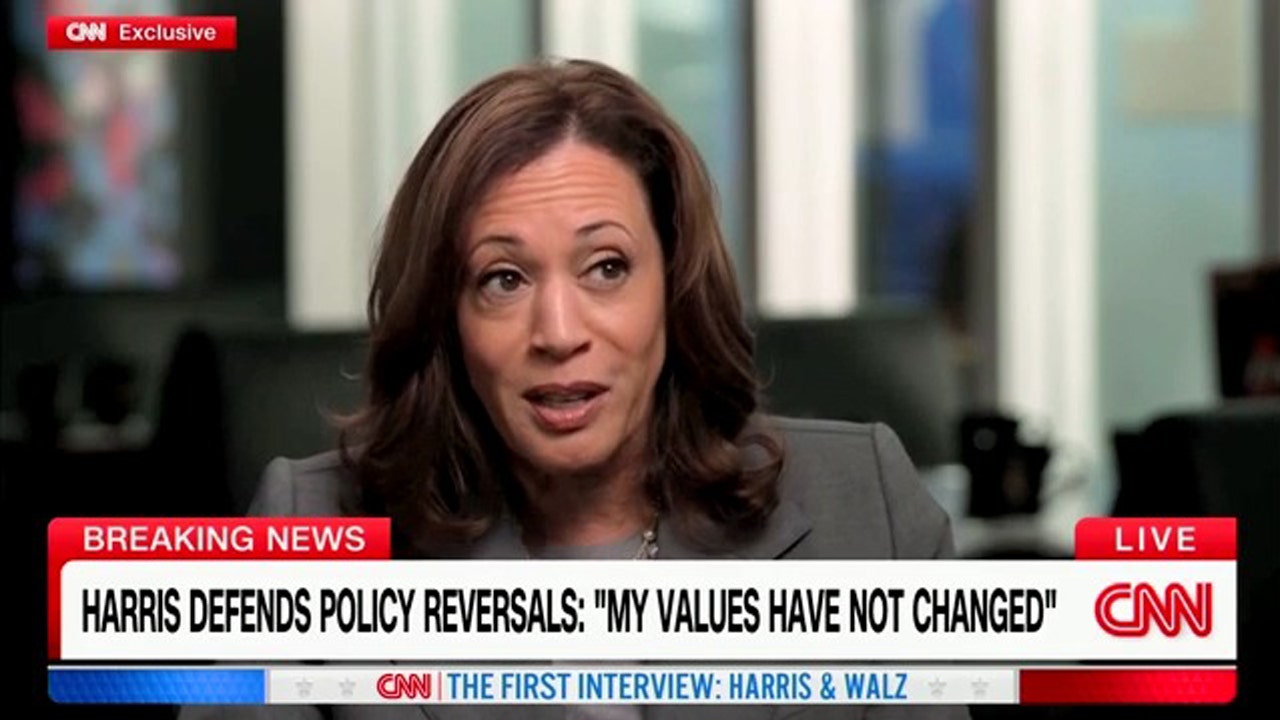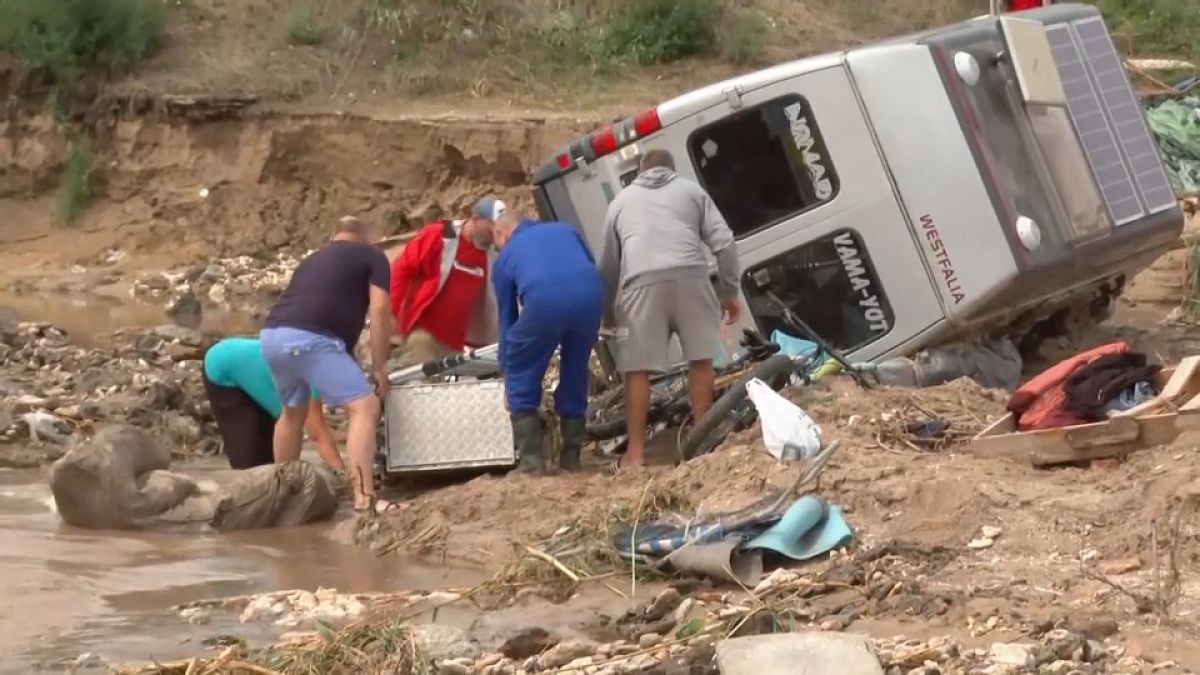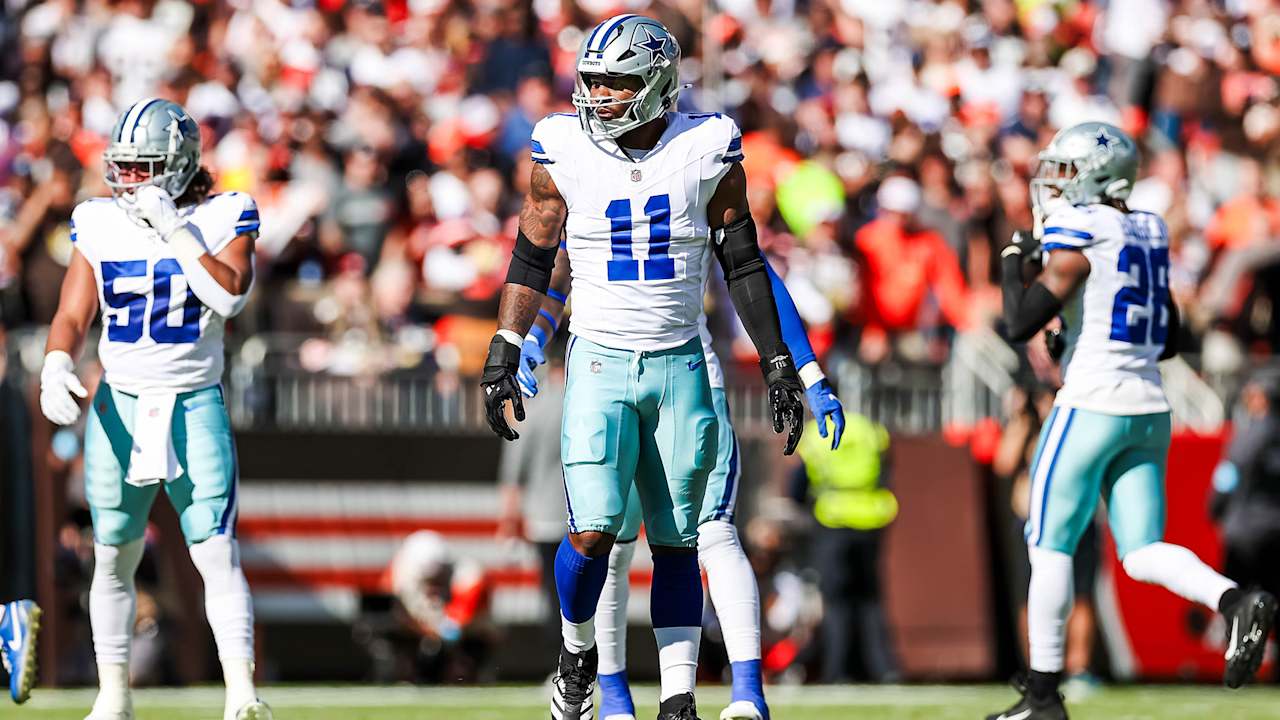Mississippi
Mississippi River basin residents worry about the environment and want change, study finds. But many don’t know they’re in the basin.
New research gives a rare look at climate attitudes of Mississippi River basin residents and the relationship they have — or don’t have — with one of the world’s most important rivers.
The study, released Oct. 23, was conducted by a team of researchers led by assistant professor Kate Rose at the University of Missouri School of Journalism, also home to the Mississippi River Basin Ag & Water Desk. They surveyed more than 2,300 adult residents from the 10 states that border the Mississippi River, including Wisconsin, seeking to better understand what people know about environmental issues in the basin.
Only about half of those surveyed were aware they lived in the basin. In Kentucky, for example, just 7.5% of respondents thought they lived in the basin, even though it includes the entire state.
The majority of Wisconsin is in the basin, with most rain or snow ending up in the Mississippi River. The remaining parts drain to Lakes Michigan or Superior.Maisah Khan, policy director for the Mississippi River Network, said she starts every presentation by showing a map of the basin — pointing out the headwaters and the Gulf, explaining the expansiveness of the tributaries that pour in. If people don’t know that they’re in the basin, she said, they can’t grasp that what happens on their stretch of river will affect what happens downstream.
More: Mississippi River mayors rally for a compact to protect the waterway
The research points to the need for river scientists and advocates to better communicate what’s going on with the Mississippi, which is essential for wildlife habitat, drinking water and worldwide commerce.
“We know some basic knowledge is lacking…but it’s important that people in those states know a little more about those issues that are affecting their daily lives,” Rose said.
Even when people notice, they may not feel like they have the power to do much.
Khan said that as the impacts of climate change become clearer, like extreme weather, people are starting to worry but don’t feel like they have much control.
“That’s really troubling,” Khan said. “It’s easy to feel hopeless.”
But the study also showed support for policy reform and other solutions to address the basin’s environmental issues.
Here are four takeaways.
Wisconsinites cared most about pollution, drinking water
The researchers surveyed 229 Wisconsin residents as part of the larger study, and broke out two topics for state-by-state results: importance of environmental topics, and seriousness of current environmental problems.
- Nearly three-fourths of Wisconsin respondents thought water and water quality were at least moderately important topics, followed closely by climate and weather.
- They thought pollution was the state’s most serious problem, with 63% selecting industrial pollution as at least somewhat serious, and 62% selecting agricultural pollution as at least somewhat serious.
- Drinking water quality, land development and urban pollution were next in line.
- The fewest respondents — though still over half — marked flooding and water availability as at least somewhat serious.
Most people believe that climate change is happening
Almost 70% of the survey’s total respondents indicated they believe climate change is happening, with the remainder split evenly between those who didn’t know and those who did not believe it is happening.
They were more divided on the drivers behind climate change and how much scientific consensus there is to support it.
The data is especially notable given that more than 99% of scientists agree that climate change is happening and is largely driven by humans.
More: Climate concern in Wisconsin is more common than you think, a new study says
Just over half of respondents said human activities were mostly causing climate change, while about 40% said climate change is mostly caused by natural changes in the environment. Nearly 70% said most scientists agree that climate change is happening, but in separate questions, 25% indicated that “there is a lot of disagreement” among scientists, and that “there’s not enough scientific evidence” to determine that it is happening.
These results match up with the most recent national data from Yale University’s climate opinion survey, which last asked American adults in 2021 their feelings on the issue. From those results, 72% of respondents said global warming is happening and 57% believed it is caused by human activities.
A majority of basin respondents, 70%, felt a religious motivation to care – saying they felt they had a responsibility to care for nature as stewards of God.
People worried about the environment, support solutions
Almost 60% of respondents said their state is being affected by changes in the environment, and more than half said environmental changes are affecting their local community. Nearly half said they’ve personally experienced adverse effects as a result of those changes, such as increasing extreme weather events.
That’s evident even in the last few years in the Mississippi River basin, which has seen periods of intense flooding, drought and extreme heat.
“If you had asked (about environmental changes) 20 years ago, it would (have been) really different,” said Dominique Brossard, chair of the Department of Life Sciences Communication at the University of Wisconsin-Madison, who reviewed a summary of the study’s findings.
“I think it’s promising that people are realizing there are environmental issues impacting their region as a whole,” she added.
More: As Mississippi River swings between historic highs and lows, shipping industry struggles to adapt
In nine of the 10 states bordering the river, more than half worried about the health impacts of environmental changes, with the most people worried in Illinois and Louisiana (about 59% and 58%, respectively). In Arkansas, about 45% of respondents worried about health impacts.
Younger respondents were more likely to report being worried than older respondents. Overall, most respondents worried about extreme weather, with 88% reporting it as at least a somewhat serious problem, followed by pollution, flooding and water quality.
Respondents overwhelmingly supported policies to protect drinking water and the environment, and the majority supported federal water policies to protect the river. Most said they were willing to support environmental initiatives locally and at the state and federal level.
One such recently proposed initiative is the creation of a multi-state compact to drum up federal support for environmental issues in the river basin, similar to the interstate compact that protects the Great Lakes. Over half of respondents indicated they would support such a compact for the river.
More: A federal funding program with bipartisan support helped clean up the Great Lakes. Could it work for the Mississippi River, too?
The study also asked about farming practices and how they affect the landscape. A majority of respondents, 64%, agreed that managing environmental issues on farmland is a high priority. About 30% said current farming practices are more detrimental to the environment than beneficial, while roughly a quarter disagreed with that statement.
Respondents largely supported sustainable agriculture practices like grass-fed animal operations and organic farming, but also approved of traditional farming practices like row-cropping.
Willingness to act dropped with personal cost
Almost half of respondents said they would be willing to change personal behaviors to combat environmental changes, such as recycling more or driving less. Their willingness dropped when the proposed actions would have a bigger impact on their wallet.
When it came to who was responsible for environmental issues that impact their regions, more than half of respondents said society as a whole bears at least a moderate amount of responsibility, compared to about 24% of respondents that felt they were personally moderately or greatly responsible. Nearly 60% said environmental issues require systemic solutions, and about half said individual actions can have a large impact on mitigating environmental degradation.
Getting people to care and take action on climate change and environmental issues relies on connecting those broader issues to what’s happening in people’s everyday lives — as Rose puts it, “bringing the local.”
“It is harder and harder to get people to take advocacy actions that don’t have a direct connection to their everyday life or direct local tie-in,” Khan said.
More: Climate change imperils the upper Mississippi River backwaters. Now nature needs human help.
Tying climate change to health impacts, for example, can be an effective way to make people take notice, Brossard said. In Khan’s case, her organization has realized that talking about the Dead Zone in the Gulf of Mexico isn’t motivating people upstream to care about what’s running into the Mississippi River. So they’ve pivoted to discussing how those same pollutants cause beach closures and algae blooms.
And while Khan said that societal and individual actions could work together to yield the greatest impact, she and Brossard agreed that systemic and policy changes could make a bigger dent in the problem.
This story is a product of the Mississippi River Basin Ag & Water Desk, an independent reporting network based at the University of Missouri in partnership with Report for America, with major funding from the Walton Family Foundation. Sign up to republish stories like this one for free.

Mississippi
Mississippi State’s Loss Doesn’t Stop SEC from Owning Week Two in AP Top 25

Outside of Mississippi State, Arkansas and Auburn, the SEC had a very successful Week Two of the college football season. The latest AP Top 25 poll reflects the strength of the SEC with 6 of the top 7 spots belonging to SEC teams.
Here’s a recap of how the ranked SEC teams fared in the second full week of the college football season:
Click here for a recap of the unranked SEC teams.
With the exception of giving up three points, this was probably exactly how Georgia expected this game to go. Carson Beck threw five touchdowns and the defense held Tennessee Tech to less than 150 yards of total offense. Anything less would be a surprise.
More than 100,000 people saw Texas come into Ann Arbor, Mich. and leave with a huge win. The Longhorns looked like the better team from the first drive of the game where they easily marched down the field. That Oct. 19 game in Austin against Georgia is looking better and better.
It was a lot closer than Alabama would’ve liked, but it’s a win that will fend off the “Nick Saban is gone, we’re doomed” crowd. At the same time, though, there were some things that crowd could point to at a later time.
Two games against inferior competition and Ole Miss has outscored its opponents 129-3. They’ll take a slight step up in competition next week against Wake Forest, but the Rebels are still about a month away from playing a team that will truly test them.
Missouri’s schedule just took an unexpected bump in its level of difficulty with No. 24 Boston College joining the top 25. Bill O’Brien is brilliant at game planning and calling plays (not so much with making trades, but that hasn’t reached the college ranks yet). Missouri needs to be on upset alert (and ready to stop the run).
This happens every year. Tennessee looks really good to start the season and by the end Volunteer fans are saying next year is their year. But maybe this year is their year with the way Nico Iamaleava has been playing.
Of the two SEC newcomers, Texas is getting most of the attention which makes sense based on the current teams. But folks, don’t sleep on the Sooners. They ruined many of my own childhood memories growing up in Texas. This week’s way-too close game doesn’t help that argument, but think long term.
LSU was one of three SEC teams to play FCS schools after playing top 25 teams last week. The Tigers and Texas A&M both lost, while Georgia won. So, it’s not surprising to see each of them play FCS teams and neither were any of the results.
SEC Week 2 Power Rankings: Which Teams Are Contenders or Pretenders?
WATCH: Mississippi State’s Bowl Hopes Take a Hit with Arizona State Defeat
Mississippi State Crumbles in the Trenches: What Went Wrong Against Arizona State?
Mississippi
Arizona State RB Cam Skattebo ‘disrespected’ by Mississippi State football’s defensive game plan

Cam Skattebo slammed Mississippi State on the football field on Saturday night and also took another jab afterward in his postgame press conference.
The Arizona State running back, following a 30-23 Sun Devils win at Mountain America Stadium, took exception to MSU only utilizing three defenders on the line of scrimmage. The results were damning.
Arizona State (2-0) rushed for 346 yards. It was the most allowed by Mississippi State (1-1) in a game since Arkansas in 2016. Skattebo’s 262 rushing yards on 33 carries were the second-most in ASU history.
“They couldn’t stop us in that three-down front,” Skattebo said when asked what made ASU’s run game successful. “Honestly, we all felt disrespected with them in a three-down front. You can’t come in here and put five guys in the box and expect to stop six. I don’t know. We took that a little disrespectful, and we rushed for what over 300 yards? Something around there. It is what it is.”
Skattebo, a 5-foot-11, 215-pound junior, also led Arizona State with 35 receiving yards on three catches.
“I knew these dudes were big and heavy,” he said. “We knew going into the game they weren’t as physical as most other teams but they’re heavy. So when they hit you, it hurts, no matter how hard they’re coming — 300 pounds at 10 miles per hour or 16 miles per hour hurts the same. I just kept my feet moving.”
Mississippi State trailed 30-3 in the third quarter but scored 20 unanswered points to cut the score to 30-23 with 5:27 to play. The Bulldogs never touched the ball again, with the Sun Devils running out the clock on 12 plays.
Skattebo had a game-sealing 39-yard rush that allowed ASU to kneel down.
“Until the end, we had our ups and downs there, but that was fun,” he said. “You can ask these guys up front, bullying dudes, grown men that are 300 pounds, that’s fun to us. That’s fun to the front-five, the front-seven and the running back. The quarterback probably hates it. He probably likes watching, but he didn’t complain one time the whole game.”
Sam Sklar is the Mississippi State beat reporter for the Clarion Ledger. Email him at ssklar@gannett.com and follow him on X @sklarsam_.
Mississippi
Why Mississippi State football loss to Arizona State revealed a strong Jeff Lebby culture

It was 11:10 p.m. Saturday in Starkville when Arizona State quarterback Sam Leavitt barreled into the end zone for his second touchdown of the game.
At that point, it would’ve been fair for Mississippi State football fans to call it a night. The Bulldogs (1-1) trailed 27-3 at ASU in the final minute of the second quarter. They were dominated in just about every statistical category. New coach Jeff Lebby looked like he was headed toward his first loss, and an embarrassing one.
And even if you gave the second half a chance, eyes just a crack open, that wasn’t encouraging either. Arizona State (2-0) took the opening drive of the third quarter for a field goal while eating 8 minutes, 27 seconds of game time. That just about decided the game before Mississippi State touched the ball in the second half.
Wrong.
Instead, MSU scored touchdowns on three of its next four drives and cut the score to 30-23 with 5:27 to play. The defense, which was torched for 346 rushing yards, needed one more stop to let the offense try to tie it. It would’ve been the largest comeback in program history.
Mississippi State’s path to a bowl game seems murkier than it was a week ago. But in the long-term, there’s still encouragement after the 30-23 loss.
“Our guys battled in an incredible way in the second half, and we’re going to hold on to that,” Lebby said in his postgame radio interview. “We’re going to find ways to get back in the building, get back to work and be able to walk into Davis Wade (Stadium) with a ton of confidence and ready to go win a football game.”
The encouragement from Mississippi State’s comeback effort
Lebby said after beating Eastern Kentucky 56-7 in Week 1 that there is an abundance of teachable moments in wins, just like losses.
There is plenty to point to after losing to Arizona State.
Mississippi State came out incredibly flat. The Sun Devils scored on their first five possessions. The MSU offense had one field goal, two punts, a fumble returned for a touchdown and a turnover-on-downs in the first half. MSU had -13 rushing yards in the first half.
There were concerns entering the game about the travel distance, late kickoff and high temperature. But let’s be real, Mississippi State was playing so poorly at the start that it was hard to judge if those were factors.
“I got to do a better job getting these guys ready to go play out of the gate,” Lebby said. “I thought our energy, our effort and our emotion was really good, but then we did not play clean there in the first quarter, so that part was frustrating.”
The Bulldogs outscored the Sun Devils 20-0 in the final quarter and a half. It was a surprise. Arizona State was rolling. Mississippi State was not.
MORE: Introducing Sam Sklar, the Clarion Ledger’s new Mississippi State beat reporter
For Lebby, a first-time head coach at any level, let it be a learning moment for him. It was his first time getting pinned in a corner. The Bulldogs adjusted correctly in the second half like good coaches do.
The rushing offense and defense both need to improve. Badly. Quarterback Blake Shapen has been impressive in his first two Mississippi State games and the wide receiver room is deep and talented as ever, but they can’t be the only answer.
That’s just for this season.
Mississippi State has its first tally in the loss column. But it isn’t a strike against Lebby leading the future of the program.
Sam Sklar is the Mississippi State beat reporter for the Clarion Ledger. Email him at ssklar@gannett.com and follow him on X @sklarsam_.
-

 Politics1 week ago
Politics1 week agoTrump impersonates Elon Musk talking about rockets: ‘I’m doing a new stainless steel hub’
-

 World1 week ago
World1 week agoBrussels, my love? Is France becoming the sick man of Europe?
-

 Politics1 week ago
Politics1 week agoTrump campaign slams Harris as 'still a San Francisco radical' after CNN interview
-

 Politics1 week ago
Politics1 week agoHarris says no regrets about defending Biden fitness for office
-

 World1 week ago
World1 week agoLocals survey damage after flooding in eastern Romania
-

 World1 week ago
World1 week agoWhy is Belgium struggling to name a European Commissioner?
-
:max_bytes(150000):strip_icc():focal(722x354:724x356)/Angelina-jolie-becomes-maria-callas-100923-01-2cce48d3de044c459234fd2c2ef1e0d7.jpg)
:max_bytes(150000):strip_icc():focal(722x354:724x356)/Angelina-jolie-becomes-maria-callas-100923-01-2cce48d3de044c459234fd2c2ef1e0d7.jpg) Movie Reviews1 week ago
Movie Reviews1 week ago'Maria' Reviews: What Critics Are Saying About Angelina Jolie's Transformation and Singing as the Opera Diva
-

 World7 days ago
World7 days agoTaiwan court orders release of ex-Taipei mayor arrested in corruption probe














